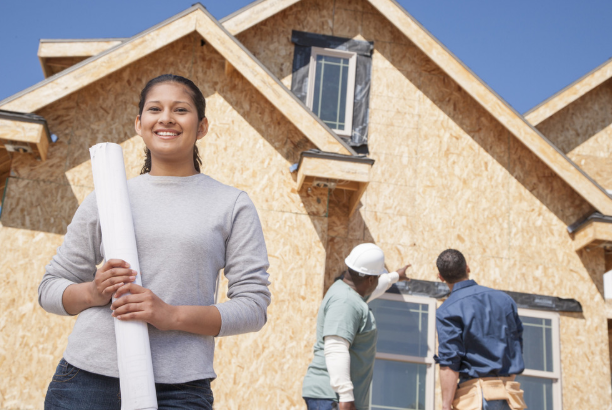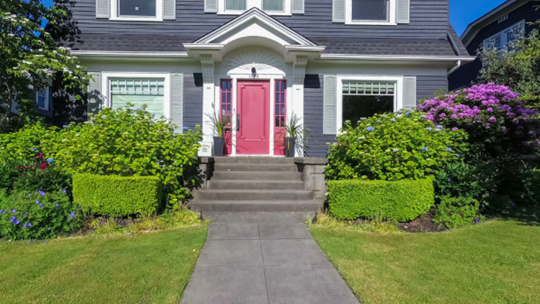Highlights:
- Start with Smart Planning: Begin with a well-defined budget and carefully chosen location to guide every decision moving forward.
- Budget Beyond the Build: Account for all costs—including permits, landscaping, and a contingency fund—to avoid financial surprises.
- Pick the Right Location for Lifestyle & Value: Choose a lot that fits your daily needs and offers long-term property value.
- Build the Right Team: Hire experienced, communicative professionals who understand your goals and can execute your vision.
- Understand the Permit Process: Secure all required permits early to stay compliant with local building codes and avoid delays.
- Stay Involved During Construction: Visit the site often, keep records, and schedule inspections to ensure quality and progress.
Building a home is one of the most exciting – and daunting – projects you’ll ever take on. Whether you’re a first-time homeowner or upgrading to your forever home, the process can feel overwhelming. With so many moving parts, from finding the right builder to navigating permits and design decisions, it’s easy to get lost in the details.
You’re not alone if you’re unsure where to begin or whom to trust. What you need are practical, straightforward tips that cut through the noise – no confusing jargon or hidden costs. This guide walks you through what every homeowner needs to know about building a home, covering everything from smart budgeting to choosing custom home builders, designing for long-term comfort, and avoiding costly missteps.
If you’re ready to make confident decisions every step of the way and bring your dream home to life, keep reading. And when you’re done, don’t miss our essential tips for first-time homeowners choosing new construction.
Essential Planning Steps
Every successful home begins with a well-thought-out plan. Before you hire a builder or pick out paint colors, you need to get clear on two foundational elements: your budget and your location. These are the cornerstones of your project, and getting them right upfront will save you time, money, and stress down the line.
Budgeting Basics: Know Your Numbers
Let’s face it – your budget is the backbone of your home build. It affects nearly every decision, from the type of home you can build to the finishes you can afford. The more detailed your budget is, the fewer surprises you’ll encounter.
Start With Your Must-Haves
Make a list of your non-negotiables – the things you absolutely want in your home (like a certain number of bedrooms or energy-efficient systems). Then list your nice-to-haves – features that would be great but aren’t essential (like a home gym or outdoor kitchen). This exercise helps you prioritize spending and make smart trade-offs when needed.
Factor in the Full Picture
Many homeowners overlook costs beyond the physical structure. Don’t forget to budget for:
- Permits and inspections
- Landscaping and driveway paving
- Furniture and appliances
- Utility hookups
- Moving expenses
And always leave room for the unexpected. A general rule is to set aside 10–20% of your total budget for surprise costs – because they will come up, whether it’s weather delays, material price hikes, or last-minute design changes.
Selecting the Right Location: Think Long-Term
Choosing where to build is just as important as what you build. A beautiful home in the wrong location can quickly become a regret. Instead, look for a lot that supports your lifestyle and offers long-term value.
Ask the Right Questions
- How far is your commute to work or school?
- Are grocery stores, parks, and hospitals easily accessible?
- Is the neighborhood safe and well-maintained?
- Is the area seeing growth in property values?
Also, investigate the lot itself. A cheap lot may have hidden costs due to:
- Poor soil quality
- Drainage issues
- Lack of access to utilities
- Complex zoning restrictions
Sometimes, paying more for a ready-to-build site can save you thousands in development costs.
Choosing Your Team: Build With the Right People
You wouldn’t climb a mountain without a guide – and you shouldn’t build a home without the right professionals. Your team can make or break your experience, so it’s worth taking the time to assemble a group that understands your vision and works collaboratively to bring it to life.
Key Roles in the Home Building Process
- General Contractor: Your go-to person. They coordinate every aspect of the build – hiring subcontractors, managing timelines, pulling permits, and overseeing construction.
- Architect: Brings your ideas to life on paper. Architects design for both beauty and function, ensuring your space suits your lifestyle.
- Draftsman: For simpler builds, a draftsman may be enough to create detailed plans at a lower cost.
- Structural Engineer: Needed for complex designs or homes built on challenging terrain.
- Interior Designer: Helps optimize your space and choose finishes that align with your taste and budget.
Each role plays a critical part. Choose professionals who align with your style, communicate well, and have a solid reputation in your area.
Questions to Ask Potential Builders
Think of hiring a builder like starting a long-term partnership – trust and communication are key. Ask the following:
- How long have you been in business?
- Can I tour some of your recent builds?
- Do you have experience with homes like mine?
- What’s your estimated timeline?
- How do you handle changes or delays?
- What warranties do you provide?
And don’t stop there – ask for references and actually call them. Ask past clients about their experience, how issues were handled, and if they would hire the builder again.
Design and Construction Tips: From Blueprint to Reality
With your team in place, the real work begins. This phase is where dreams take shape – literally. But it’s also where details matter most. Being proactive, informed, and involved will help keep your project on time and on budget.
Permits and Regulations: Don’t Skip This Step
Permits are more than paperwork – they protect you by ensuring your home is built safely and legally. Requirements vary by city and county, so start by visiting your local building department.
Common permits include:
- Building permit
- Electrical
- Plumbing
- Mechanical (HVAC)
Zoning laws may also affect what you can build and where. For example, some areas restrict building height or require a certain setback from the street. Ignoring these rules can lead to expensive delays or even demolition.
Construction Phase Best Practices
Once construction starts, it’s easy to get overwhelmed. Here’s how to stay grounded:
- Visit regularly: Check in on progress. You don’t need to micromanage, but showing up signals that you’re engaged.
- Communicate clearly: Document every decision and change in writing. This avoids confusion later.
- Invest in quality: Don’t cut corners on materials or workmanship. It may be cheaper upfront, but it could cost more in repairs and maintenance over time.
- Stay organized: Keep a project binder (or digital folder) with all plans, contracts, receipts, and correspondence.
The Importance of Inspections
Regular inspections during construction ensure your home is being built to code and according to plan. Don’t rely solely on your builder to catch mistakes.
Schedule inspections at key stages:
- Foundation (before concrete is poured)
- Framing
- Electrical and plumbing rough-ins
- Final walkthrough
If possible, hire a third-party inspector for an objective review. Catching issues early prevents small problems from becoming major setbacks.
Bringing It All Together: Your Dream Home Awaits
Building a home is a journey that requires patience, planning, and the right team by your side. From laying the financial groundwork to watching the final walls go up, every step matters.
Stay involved, ask questions, and trust your instincts. By understanding the process, planning ahead, and working with professionals who respect your vision, you can create a home that’s not just beautiful – but built to last.










